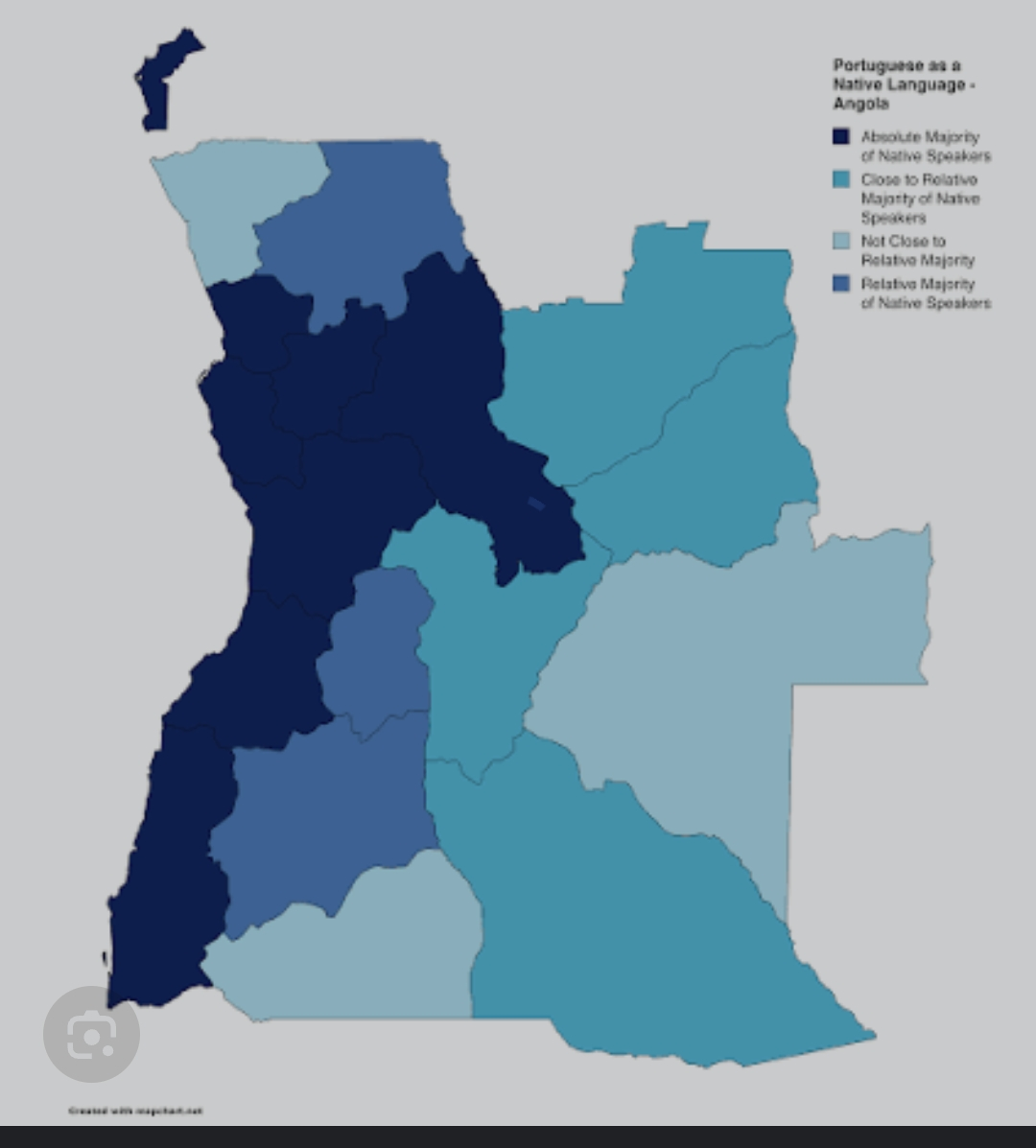Portuguese Speakers in Western Angola Map


Marcus Rodriguez
Historical Geography Expert
Marcus Rodriguez specializes in historical cartography and geographic data analysis. With a background in both history and geography, he brings unique...
Geographic Analysis
What This Map Shows
This map illustrates the linguistic landscape of western Angola, predominantly highlighting the vast majority of residents who are native Portuguese speakers. Angola, a Portuguese-speaking country in southern Africa, has a rich cultural tapestry influenced by its colonial past and indigenous traditions. The map provides a visual representation of how Portuguese has become the primary language for communication in urban centers and rural communities alike in this region.
Deep Dive into Language Distribution
The prominence of Portuguese in western Angola can be traced back to the colonial period when Angola was a colony of Portugal from the late 15th century until 1975. Interestingly, after the country gained independence, the Portuguese language remained a unifying force among various ethnic groups. Today, about 71% of Angola's population speaks Portuguese, making it not only the official language but also the most widely spoken one in everyday life.
What's fascinating is that while Portuguese serves as a lingua franca, over 90 different indigenous languages are also spoken across the country, including Kikongo, Kimbundu, and Umbundu. However, in urban areas like Luanda, the capital, and other major cities such as Benguela and Huambo, Portuguese dominates daily interactions, education, and media, reflecting a shift towards a more urbanized, interconnected society.
The language distribution is not just a matter of communication; it also plays a crucial role in identity formation and socio-economic dynamics. For instance, proficiency in Portuguese is often linked to better job opportunities and access to education, which can perpetuate a cycle of socio-economic stratification. Moreover, as urbanization continues, the younger population is increasingly bilingual, blending Portuguese with local languages, thus enriching the linguistic landscape of the region.
Regional Analysis
Analyzing the map further, we can see significant variations in language use across different regions in western Angola. In the coastal areas, particularly around Luanda, the use of Portuguese is nearly universal, with the language becoming entrenched in business and government. In contrast, in more rural regions, while Portuguese is still spoken, it may coexist with a variety of indigenous languages that reflect the local culture and heritage.
For example, in the province of Namibe, while Portuguese is widely understood, indigenous languages like Ngumbi are also prevalent in communities. This coexistence demonstrates the rich cultural diversity in Angola. In Huambo, a region with a strong Kimbundu-speaking population, there is a notable blend of Portuguese and Kimbundu in everyday speech, highlighting the dynamic interaction between languages.
Interestingly, demographic factors also influence language use. Areas with higher concentrations of youth tend to show a stronger inclination towards Portuguese due to educational policies favoring the language. Urban centers are often seen as hubs of modernity, while rural areas may retain more of their traditional linguistic practices. This duality creates a complex linguistic map that reflects both historical influences and contemporary realities.
Significance and Impact
Understanding the linguistic landscape of western Angola is crucial for several reasons. Firstly, it provides insight into the socio-cultural identity of the Angolan people. Language is a powerful tool for communication, yet it also carries with it the weight of history and culture. As Angola continues to develop economically, the role of Portuguese in education and government will likely expand, shaping the future of the country’s linguistic landscape.
Moreover, as globalization progresses, the interaction between Portuguese and indigenous languages might lead to new hybrid dialects. This evolution is significant as it can influence national identity, cultural expressions, and even political dynamics. The younger generation's engagement with Portuguese media, music, and literature fosters a unique cultural blend that might redefine what it means to be Angolan.
In conclusion, the map of Portuguese speakers in western Angola reveals much more than just language distribution; it encapsulates the historical, cultural, and socio-economic narratives of a nation in transition. As we move forward, keeping an eye on these linguistic trends will be essential for understanding the broader implications for community cohesion and national identity in Angola.
Visualization Details
- Published
- September 17, 2025
- Views
- 64
Comments
Loading comments...